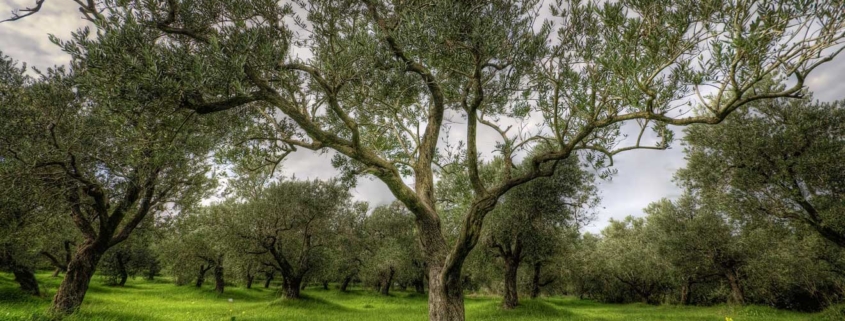Today Is Holy
Apples and honey. Rituals and recitations. Lulavs and etrogs. The traditions of the Fall holy days appear to provide great fullness to the season. For many, it is a rich cultural experience—deeply immersing, and spiritually profound. A practical cornucopia of memories, lessons, and opportunities to learn about the Messiah…
Or is it?
The many inventions of Judaism may well embody the cultural expression of countless generations of Jewish people worldwide, supplementing the seemingly scant biblical prescriptions with colorful, festive, spiritual-sounding customs. But the sad truth is that, for the most part, Jewish tradition does more to distract from and cover over the simple words of Scripture regarding these sacred times than it does to highlight or elevate them. We’ve added so much butter, as it were, that we can no longer find the bread. If we want to know God’s truth for these special holy days, Judaism cannot point us to it. Our only option, then, is to search out what Scriptures actually say.
In the Torah, God’s holy days are called mo’adiym, or the singular mo’ed. The word mo’ed means an appointed time or place, a meeting set in advance. The word is used regularly to describe the tent of meeting (a name for the tabernacle where the priests went in to make offerings to Adonai on behalf of all Israel) and also for the special tent outside the camp where Moses spoke with God “face to face” (Ex. 33:11)—in both cases, a vivid picture of God Himself coming down to earth to meet with His people.
Another term used in Torah for the appointed times is miq’ra qodesh, often translated as “holy convocation” or “sacred assembly.” It is easy to assume that this “assembly” refers to the physical gathering of the people of Israel—a calling to appear before God in observance of the divine appointments. And it is true that such gathering was common on those days, even commanded three times in the year. But one fall mo’ed—the most sacred of them all, Yom Kipur—is observed without any such assembly; on the contrary, to enter the tent of meeting where the high priest is offering sacrifices is expressly prohibited (Lev. 16:17).
So what kind of “coming together” can happen without actually coming together? To what type of “meeting” are God’s people being called? Perhaps the truth of these annual, holy days is that they are simply this: appointed times, set in advance by God, for Him to come down and meet with His people Israel, physically and spiritually, as they too come to be in His presence. God set the dates and He promised, I will be here, every year at these times, forever. Come be with me (cf. Lev. 23:21,31,41).
And that simplest of understandings about the mo’adiym—that plainest but most crucial truth—is precisely what Israel found hardest to remember. Though the appointments had been made, Israel continually failed to keep them. Not until the book of Nehemiah do we finally see the fullness of the Fall mo’adiym.
In Nehemiah, on the first day of the seventh month, Yom T’ruah, Ezra the priest stood up in front of the whole assembly—a broken and exiled people returning to Jerusalem from the ends of the earth; lost sheep needing to hear the words of their Shepherd. Along with the Levites, Ezra “read in the Book, from the Torah of God, explaining so as to give the meaning, and they gave the understanding to the miq’ra [assembly]” (Neh. 8:8, mjlt). The people wanted to weep as they listened, but Nehemiah the governor consoled them, saying, “today is holy to ’Adoneinu. And be not grieved, for the joy of Adonai is your strength” (8:10).
Continuing to study the Torah, the leaders learned of the Feast of the seventh month—Sukot—and they told the people,
“‘Go out to the mountain and bring leafage of… thick trees to make sukot [huts], as it is written.’ So the people went out… and made for themselves sukot, each on his roof, and in their courtyards, and in the courtyard of the House of God…. And the whole assembly of the returned from captivity made sukot, and they lived in sukot. For from the days of Y’hoshua the son of Nun, the sons of Yis’rael had not done so, and there was very great joy” (8:15b-17).
A simple feast, observed by simple commands from the Torah—the first such celebration in a thousand years, since the days of Moses’ successor. But there was great rejoicing, and the people of Israel were moved in their hearts; “all the people went to eat and to drink… and to make great joy, because they understood… the words that had been made known to them” (8:12). God’s people finally decided to show up for the meeting.
Did this post bless you?
♥
Most of us are unable to visit Jerusalem, the place where God chose to put His name, and God’s House no longer stands. Yet through the Messiah Yeshua—the perfect embodiment of God coming down to meet His people—we can still keep our divine appointments during this holy season. He is still there, waiting. All we have to do is show up. This year, let us focus on connecting with God simply—reading, hearing and doing His word—as we experience the supreme joy of His feast and appointed times.
What do you think? Share your thoughts in the comments below!







” All we have to do is show up. This year, let us focus on connecting with God simply—reading, hearing and doing His word”.
” Come be with me”.
These two sentences from your article spoke volume to me and brought tears to me. They speak of the all the Love and Compassion the Messiah offers to me anytime and anywhere if I would “just come”.